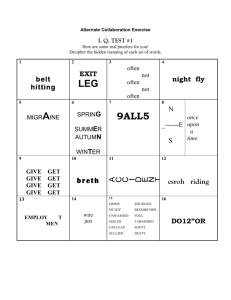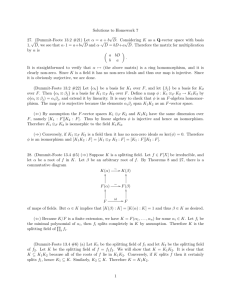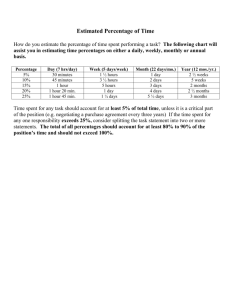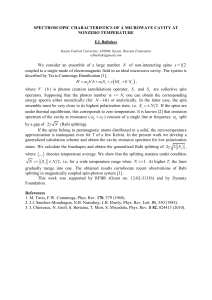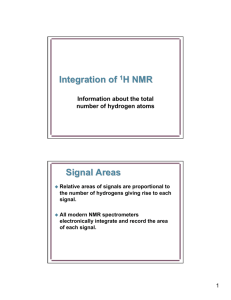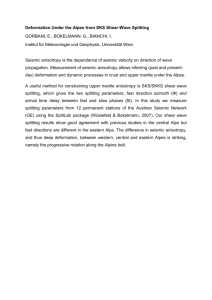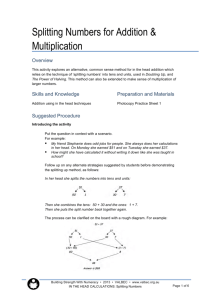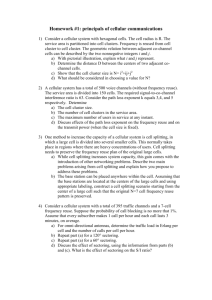Slides
advertisement
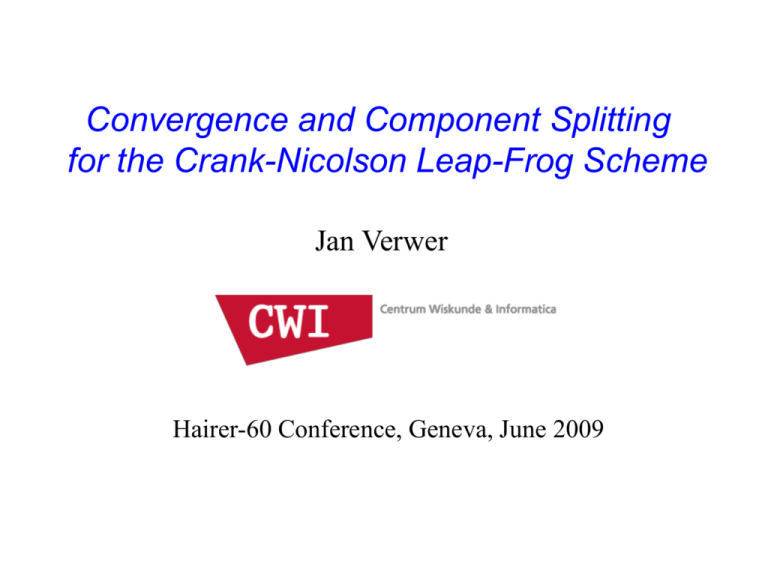
Convergence and Component Splitting for the Crank-Nicolson Leap-Frog Scheme Jan Verwer Hairer-60 Conference, Geneva, June 2009 Crank-Nicolson Leap-Frog (CNLF) non-stiff stiff CNLF: given Usually IMEX-Euler for Contents of this talk CNLF is a two-step IMEX scheme. Used for PDEs in CFD (method of lines). Non-stiff term then represents convection and the stiff term diffusion + reactions. This talk is about an alternative use of CNLF: - A splitting (convergence) condition justifying a wider class of splittings than normally seen in CFD - As an example, component splitting for 1st order Maxwell-type wave equations - Two numerical illustrations of component splitting Consistency of CNLF We always think of semi-discrete systems but suppress for convenience the spatial mesh size Further, order terms like are always supposed to be derived and valid for Consistency of CNLF Just for convenience we neglect spatial errors. Denote . Then the local truncation of CNLF satisfies if In CFD applications this splitting (convergence) condition is mostly satisfied! Consistency of CNLF For the IMEX-Euler scheme the splitting (convergence) condition features in the same way. That is, if then uniformly in the spatial mesh size Convergence of CNLF Hence, if and assuming stability, CNLF with Euler start will converge with order two uniformly in the spatial mesh width! Q: is this common splitting (convergence) condition also necessary for 2nd – order convergence? Numerical counter example Semi-discrete 1st-order wave equation, with a splitting such that is violated (splitting details later). We let (i) The common splitting condition is not necessary for 2nd order CNLF convergence. What is the right condition? 1st order 2nd order (ii) But why only 1st order when IMEX-Euler is used to start up? -o- : Exact (or CN) start -*- : IMEX-Euler start A new splitting (convergence) condition First the linear case: (n) Thm. Assume stability and condition (n). Then, uniformly in h, (i) IMEX-Euler is 1st-order convergent (ii) CNLF with IMEX-Euler start is 1st-order convergent (iii) CNLF with “exact start” is 2nd-order convergent Proofs rest on local error cancellation of terms that cause order reduction if is violated. The cancellation fails at the first CNLF step when IMEX-Euler is used to compute . A new splitting (convergence) condition The non-linear case: The new condition reads Component splitting Discussed for linear, semi-discrete 1st order wave equations CNLF: where with S a diagonal matrix satisfying the general ansatz The splitting condition - The common splitting condition requires - However - The new splitting condition is to be interpreted as a discrete spatial integration which “removes” the factor Hence fails Stability - Stability analysis of IMEX methods normally requires commuting operators. However, which is not true! - All we can say is that which regarding stability is necessary for the LF part and sufficient for the CN part in CNLF - Experience: runs are stable for the maximal stable step size for the LF part Numerical illustration I The component splitting matrix S is chosen in the form Illustration I (piecewise uniform grid) Splitting matrix S such that LF is applied at the coarse grid and CN at the fine grid. Factor 10 between coarse & fine grid! Illustration I (the splitting conditions) Plots for time t = 0 1/h Illustration I (global errors) Global errors at t = 0.25 Maximal step size τ = h with h the coarse grid size 1st order 1/h --- : 2nd - order -o- : CNLF with CN start -*- : CNLF with IMEX-Euler start -+- : CN CNLF with CN start gives 2nd order The IMEX-Euler start causes order reduction !!! Illustration I (uniform grid, random S) Uniform grid and S randomly chosen as Global errors at t = 0.25 Step size τ = h --- : 2nd order -o- : CNLF with CN start -*- : CNLF with IMEX-Euler start -+- : CN Results are in line with those on the non-uniform grid Illustration II 2D Maxwell type problem on unit square U(x,y,t = 0) U(x,y,t = 1) Illustration II Strongly peaked 0.95 < d(x,y) ≤ 100. Through component splitting, we use CN near the peak (d ≥ 1) and LF elsewhere, to avoid the step size limitation for LF near the peak A uniform staggered grid and 2nd order differencing with grid size h requires for LF The following results at t = 1 are obtained with CNLF for using only a very small amount of implicitly treated points Illustration II CNLF is as accurate as CN Illustration II nnz: number of nonzeros in linear system matrix (sparsity indicator) Conclusions -- Component splitting tests confirm the new CNLF convergence condition -- Component splitting can be set up in the same way for 3D Maxwell -- But, how practical this is for real applications, I don’t know yet
